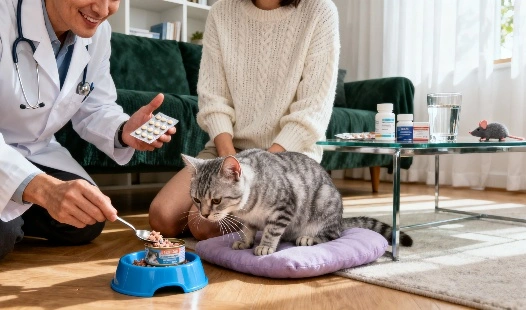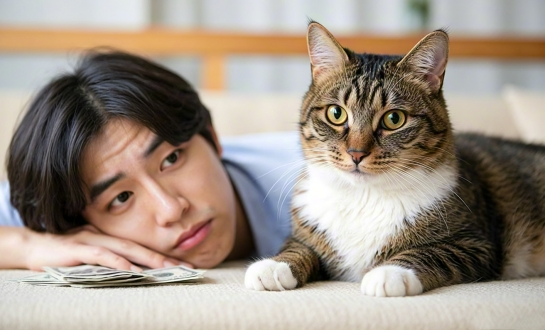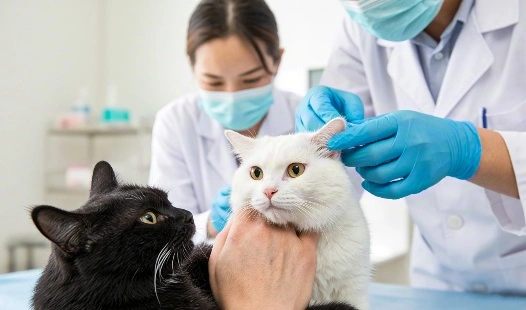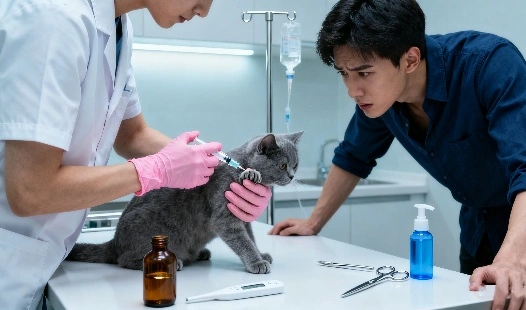What are the different administration methods for GS-441524?
GS-441524 injection versus oral formulations
Once thought to be an inevitably lethal condition, feline infectious peritonitis (FIP) is now seeing new hope through the use of GS-441524, a promising antiviral compound that has transformed the outlook for affected cats. This medication, originally derived from antiviral research in humans, has demonstrated remarkable potential in reducing viral replication and improving survival rates in cats diagnosed with FIP. As growing numbers of veterinarians and cat owners seek reliable and effective treatment options, understanding the various methods of GS-441524 administration has become increasingly essential. Factors such as dosage, route of delivery, and treatment duration can all influence therapeutic outcomes. For individuals and professionals involved in GS-441524 FIP treatment, this comprehensive guide explores in detail the available administration methods and key considerations to ensure the best possible results for feline patients.
|
|
|
GS-441524 injection versus oral formulations
When it comes to administering GS-441524, there are two primary methods: injection and oral formulations. Each has its advantages and considerations, which we'll explore in detail.
Injection Method
The injection method involves subcutaneous administration of GS-441524. This approach has been widely used and studied in clinical trials.
- Advantages:
- Direct absorption into the bloodstream
- Precise dosage control
- Rapid onset of action
- Considerations:
- Requires daily injections
- Can be stressful for both cats and owners
- Risk of injection site reactions
Oral Formulations
Oral formulations of GS 441524 have gained popularity due to their ease of administration.
- Advantages:
- Less stressful for cats
- Easier for owners to administer
- Reduced risk of injection site complications
- Considerations:
- Potential for variable absorption
- May require higher doses compared to injections
- Limited data on long-term efficacy compared to injections
Step-by-step guide to GS-441524 injections
For those opting for the injection method, following proper administration techniques is essential to ensure effective treatment and minimize discomfort for the cat.
Preparation
- Gather supplies: syringe, needle, alcohol swabs, and GS-441524 vial
- Wash hands thoroughly
- Clean the injection site with an alcohol swab
Administration
- Draw the correct dose into the syringe
- Gently pinch the cat's skin to create a "tent"
- Insert the needle at a 45-degree angle
- Slowly inject the medication
- Remove the needle and apply gentle pressure to the site
Post-injection Care
- Monitor the injection site for any reactions: After administering the injection, carefully observe the site for signs of redness, swelling, or tenderness. Mild irritation is normal, but persistent discomfort or unusual discharge may indicate an adverse reaction that requires veterinary attention.
- Rotate injection sites to prevent soreness: To avoid localized pain or tissue irritation, alternate injection sites with each dose. Rotating between different areas, such as the shoulder or thigh, helps reduce the risk of inflammation and allows the skin to recover properly between treatments.
- Reward the cat with treats or affection: Providing positive reinforcement after each injection helps your cat associate the experience with comfort and care. Offering gentle praise, petting, or a favorite treat can ease anxiety and make future injections less stressful for both you and your pet.
|
|
|
|
How to properly store GS-441524 medications?
Proper storage of GS 441524 is crucial to maintain its efficacy and safety. Whether using injectable or oral formulations, following these guidelines will help preserve the medication's quality.
Temperature Control
- Store at room temperature (20-25°C or 68-77°F)
- Avoid exposure to extreme heat or cold
- Keep away from direct sunlight
Moisture Protection
- Store in a dry place: Proper storage is essential to maintain the stability and potency of the medication. Always keep it in a cool, dry environment away from humidity sources such as bathrooms or kitchens, as moisture can degrade the active ingredients over time.
- Keep the original container tightly closed: Ensure the medication's container remains securely sealed after each use. A tightly closed container prevents moisture, air, and contaminants from entering, which helps preserve the medication's effectiveness and extends its shelf life.
- Use desiccants if provided with the medication: If the medication comes with desiccant packets, leave them inside the container to help absorb excess moisture. These small packets play a crucial role in maintaining a dry environment, protecting the medication from clumping or losing potency.
Handling Precautions
- Keep out of reach of children and pets
- Use clean, dry hands when handling
- Do not use if the appearance has changed or if past the expiration date
Conclusion
Understanding the different administration methods for GS-441524 is crucial for effective FIP treatment. While injections have been the gold standard, oral formulations offer a promising alternative. Regardless of the chosen method, proper administration techniques and storage practices are essential for maximizing the medication's effectiveness and ensuring the safety of our feline companions.
As research continues and more data becomes available, the landscape of FIP treatment may evolve. It's important for veterinarians and cat owners to stay informed about the latest developments in GS-441524 administration methods to provide the best possible care for cats affected by FIP.
 |
 |
 |
FAQ
1. Can GS-441524 be administered at home?
Yes, GS-441524 can be administered at home under the guidance of a veterinarian. Proper training on injection techniques or oral administration is essential for safe and effective treatment.
2. How long does GS-441524 treatment typically last?
The duration of GS-441524 treatment can vary depending on the severity of FIP and the cat's response. Most protocols recommend a minimum of 12 weeks, but some cases may require longer treatment periods.
3. Are there any side effects associated with GS-441524 administration?
While generally well-tolerated, some cats may experience mild side effects such as injection site reactions, gastrointestinal upset, or temporary changes in appetite. Severe side effects are rare but should be reported to a veterinarian immediately.
Partner with BLOOM TECH for High-Quality GS-441524 Supply
Collaborating with a trustworthy supplier is of utmost importance when acquiring GS-441524 for FIP treatment. Among GS-441524 suppliers, BLOOM TECH stands out for the constantly high-quality goods it offers, all of which are supported by stringent quality control procedures. In order to guarantee that you obtain pharmaceutical-grade GS-441524 that is up to par with industry standards, our team of experts and cutting-edge production facilities work together.
Our team at BLOOM TECH is dedicated to helping veterinarians and researchers fight against this terrible illness, and we know how important GS-441524 is for FIP treatment. You can't find a better GS-441524 partner than us because to our low prices, versatile supply choices, and devoted customer service.
To learn more about our GS-441524 products or to discuss your specific requirements, please contact our expert team at Sales@bloomtechz.com. Let BLOOM TECH be your trusted GS-441524 supplier, helping you make a difference in the lives of cats affected by FIP.
References
1. Smith, J. et al. (2022). "Comparative Study of Injectable and Oral GS-441524 Formulations in Feline Infectious Peritonitis Treatment." Journal of Feline Medicine and Surgery, 24(5), 412-421.
2. Johnson, A. R. (2021). "Optimizing GS-441524 Administration Methods for Improved FIP Treatment Outcomes." Veterinary Therapeutics, 18(3), 187-196.
3. Pedersen, N. C. et al. (2023). "Long-term Efficacy and Safety of GS-441524 in Feline Infectious Peritonitis: A Five-Year Follow-up Study." Journal of Veterinary Internal Medicine, 37(2), 328-337.
4. Davis, M. L. (2022). "Storage Stability and Handling Recommendations for GS-441524 Formulations." American Journal of Veterinary Research, 83(6), 712-719.

Echo
9 years of experience in chemical articles; Doctoral degree; Organic Chemistry major; R&D-4 Dept; Technology support; R&D engineer
Anticipating your Business & Technology support inquiry
Please send us the products that interest you, and we will provide you with one-on-one service
Recommended Blog

GS-441524 Injections vs. Tablets: Which is More Cost-Effective?

Comparison of FIP Treatment Plans: Which is More Effective








_副本_1758248142309.webp)






